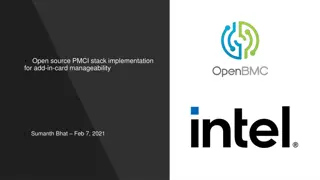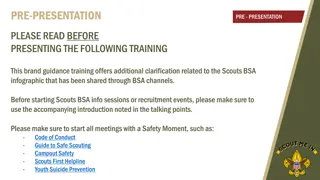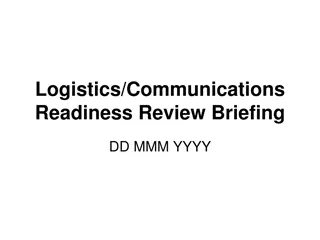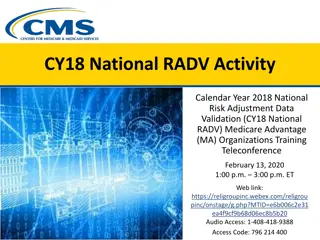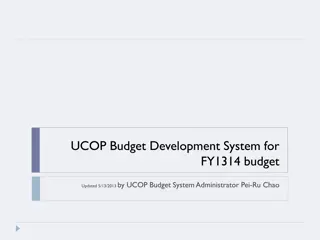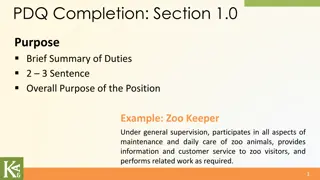
Maximizing Anonymity with Dummy Jondos
Discover how using dummy jondos in a crowd can enhance anonymity and defend against eavesdropping and end-server attacks. Learn about collaborating jondos, crowd size impact, and strategies for maintaining anonymity. Explore implications for latency and security considerations.
Uploaded on | 1 Views
Download Presentation

Please find below an Image/Link to download the presentation.
The content on the website is provided AS IS for your information and personal use only. It may not be sold, licensed, or shared on other websites without obtaining consent from the author. If you encounter any issues during the download, it is possible that the publisher has removed the file from their server.
You are allowed to download the files provided on this website for personal or commercial use, subject to the condition that they are used lawfully. All files are the property of their respective owners.
The content on the website is provided AS IS for your information and personal use only. It may not be sold, licensed, or shared on other websites without obtaining consent from the author.
E N D
Presentation Transcript
Increasing Anonymity via Dummy Jondos in aCrowd Author: Benjamin Winninger
Eavesdropping Attacks Local Eavesdropper: An attacker who can view all communication to and from a user. If the eavesdropper gets lucky and is listening to the sender, then the sender is exposed! Otherwise, the receiver is beyond suspicion. As the size of the crowd increases, the probability of a local eavesdropper getting lucky decreases.
End Server Attacks End Server: The web server to which the jondo s request is sent. Since the server can see traffic to and from itself, receiver anonymity isn t possible! Also, since any jondo could have forwarded the request, it is equally likely that any jondo did forward the request. As the size of the crowd increases, the probability of determining which jondo forwarded the request decreases.
Collaborating Jondo Attacks Collaborating Jondos: A group of crowd members that can view all communication to and from collaborating users and pool this information together to find the sender of a request. If the number of crowd members n >= pf*(c+1)/(pf-(1/2)) (note: c = number of collaborators, pf= probability of forwarding, assumed > (1/2)), then the sender has probable innocence! As the size of the crowd increases, the number of collaborating jondos that it can resist also increases!
Takeaways In order for a crowd to provide maximum anonymity, the crowd must have a large number of users . In an event where there are few (non-collaborating) users, dummy jondos can help a crowd resist all three attacks discussed. The case of the collaborating jondos is particularly interesting since it poses the greatest (consistent) threat to crowd anonymity, so dummy jondos could prove to be extremely useful in this scenario (i.e. by keeping n above the specified value in the previous slide)
Analysis To Be Completed What is the tradeoff of latency for anonymity? How can dummy jondos be set up and registered properly? Is there a new forwarding algorithm that will help work with dummy jondos? How often should dummy jondos be added/dropped out of the crowd? Etc.
Resources http://www.cise.ufl.edu/~nemo/anonymity/papers/crowds:tissec.pdf www.cise.ufl.edu/~nemo/.../lect04aCrowds.ppt http://scholarworks.umass.edu/cgi/viewcontent.cgi?article=1167&context=c s_faculty_pubs http://freehaven.net/anonbib/cache/taxonomy-dummy.pdf

![❤[READ]❤ Deep Space Craft: An Overview of Interplanetary Flight (Springer Praxis](/thumb/21511/read-deep-space-craft-an-overview-of-interplanetary-flight-springer-praxis.jpg)




